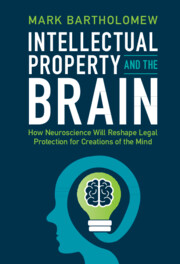 Intellectual Property and the Brain
Intellectual Property and the Brain Book contents
- Intellectual Property and the Brain
- Intellectual Property and the Brain
- Copyright page
- Contents
- List of Figures
- Acknowledgments
- Introduction
- Part I The Law and Neuroscience of Creative Activity
- Part II Understanding Audiences for Art and Advertising
- Part III Using Neuroscience to Improve Intellectual Property Law
- 6 How to Take Creativity Seriously
- 7 Know Your Audience
- 8 Advertising, Fast and Slow
- Conclusion
- Index
Conclusion
from Part III - Using Neuroscience to Improve Intellectual Property Law
Published online by Cambridge University Press: 14 July 2022
- Intellectual Property and the Brain
- Intellectual Property and the Brain
- Copyright page
- Contents
- List of Figures
- Acknowledgments
- Introduction
- Part I The Law and Neuroscience of Creative Activity
- Part II Understanding Audiences for Art and Advertising
- Part III Using Neuroscience to Improve Intellectual Property Law
- 6 How to Take Creativity Seriously
- 7 Know Your Audience
- 8 Advertising, Fast and Slow
- Conclusion
- Index
Summary
Artists, audiences, judges. These are the three demographic categories that intellectual property law concerns itself with. The thought patterns of creators determine whether art and commercial design can enjoy legal protection from copyists. The boundaries of that protection are set according to audience perspectives on aesthetic appeal and consumer confusion. The law imagines artists to be more impetuous than deliberate, more holistic than detail-oriented.
- Type
- Chapter
- Information
- Intellectual Property and the BrainHow Neuroscience Will Reshape Legal Protection for Creations of the Mind, pp. 187 - 190Publisher: Cambridge University PressPrint publication year: 2022
